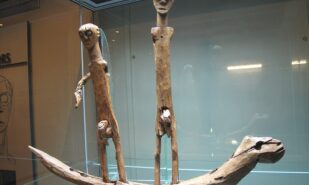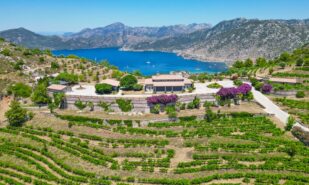The basic element of my style is based on the motherboard of a computer: I develop a circle, a line and an angle of 45°, the three elements which make up the motherboard. I can apply this to textiles, ceramics and paintings. I can join these three elements in any combination with each other to create an enormous amount of patterns.
Corinna Gannon in conversation with the artist VitalyV in East Finchley on 2nd June
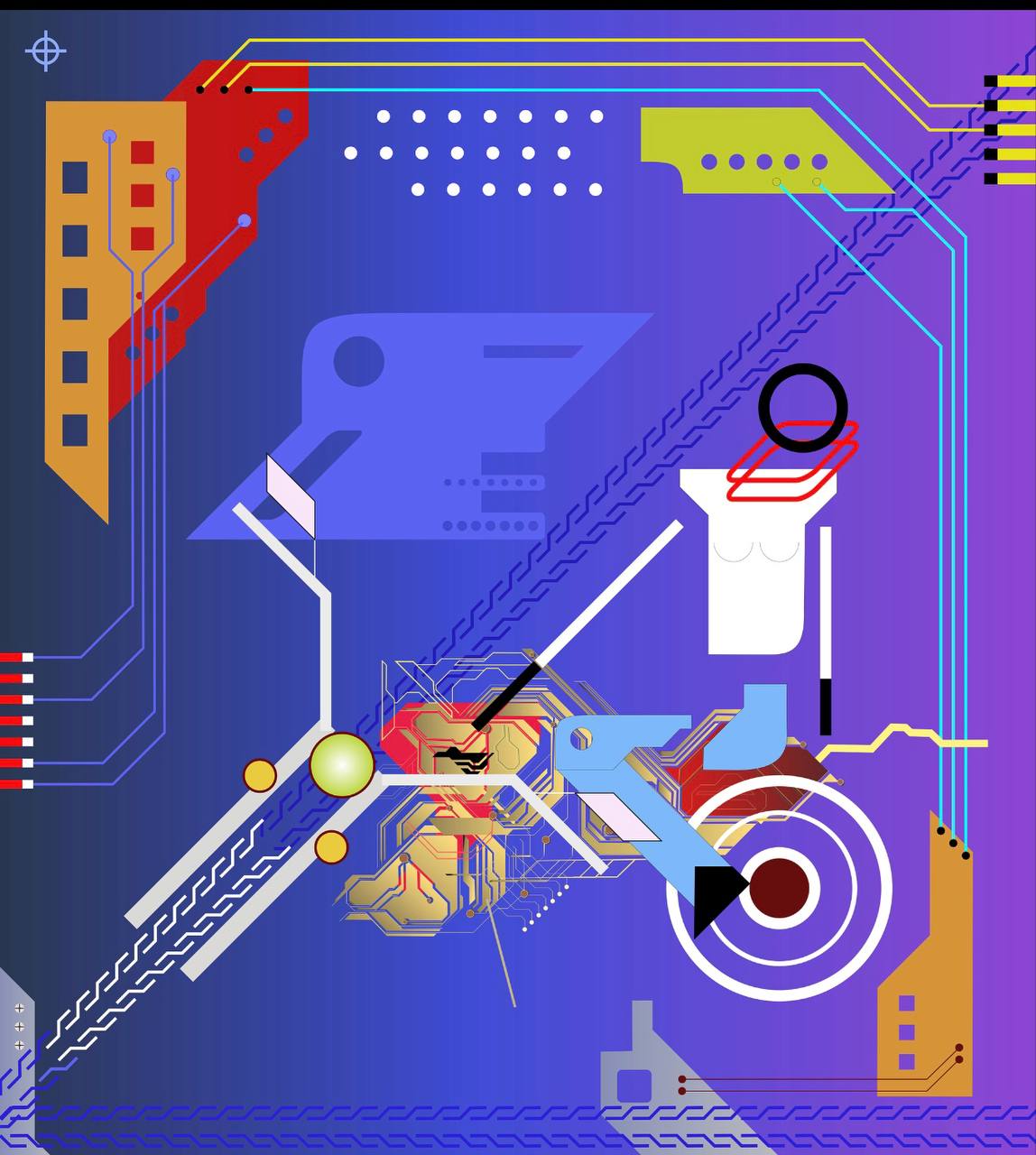
I was born in Odessa, the Ukraine, then studied engineering and classical painting in St Petersburg. In the mid-1990s I was living and working in London; it was the time just before the Internet started. I was thinking about how exciting it would be to create a cyberspace museum, both as an artist and as a businessman. If I didn’t do it, someone else might and then I would lose this chance! As I was thinking about this, I opened up a computer and saw this motherboard and immediately loved it: it is complicated and fantastical with a green or red base and lots of golden lines. It is a piece of art in its own right; I like the aesthetics and the logic, so I thought about how to make art based on this.
I understand how a computer works but nobody knows how current literally works – I roughly understand what is going on. I would rather keep that ‘full knowledge’ at a distance. It’s like watching circus tricks – if you know too much the process is demystified. I would rather let my imagination do some of the interpretation, which could even be a spiritual journey. I made a clear glass computer in order to see the box and these workings – that presents the viewer with a purely functional mechanism, but it also opens up a mystical realm.
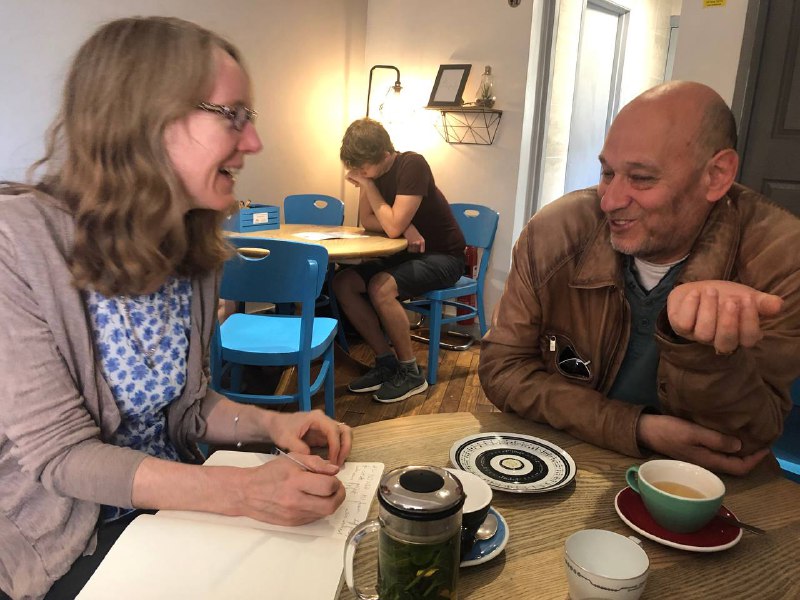
Now the motherboard has gone as an item of fascination in itself to me, but what remains are its components, like I said, circles, lines and 45° angles. I can make all sorts of schemas, forms, connections, colours into endless possibilities using just these three components.
I used to call what I was doing ‘digital art’. But this name just seemed too generic and I was never happy with it. It took me quite a while to come up with the right nomenclature to describe my art, but one day I was watching Italian television and the name ‘suprematism’ kept coming up in relation to politics. I thought, “Why are Italians using this name to refer to political processes when it is a style of art in Russia?” That suddenly opened up a door for me in terms of the meanings that are attributed to words and how they are not fixed. I thought of the word ‘schema’ as that has a link to computers. ‘Schema’ has many meanings, some of which include ‘a representation of a plan or theory’, ‘a skeleton structure’. So then I turned this into ‘schematism’, that process of ‘doing schemas’. My art historian friends approved of this name: it had a modern ring to it but did not refer to a specific, existing style, and had not yet been taken!
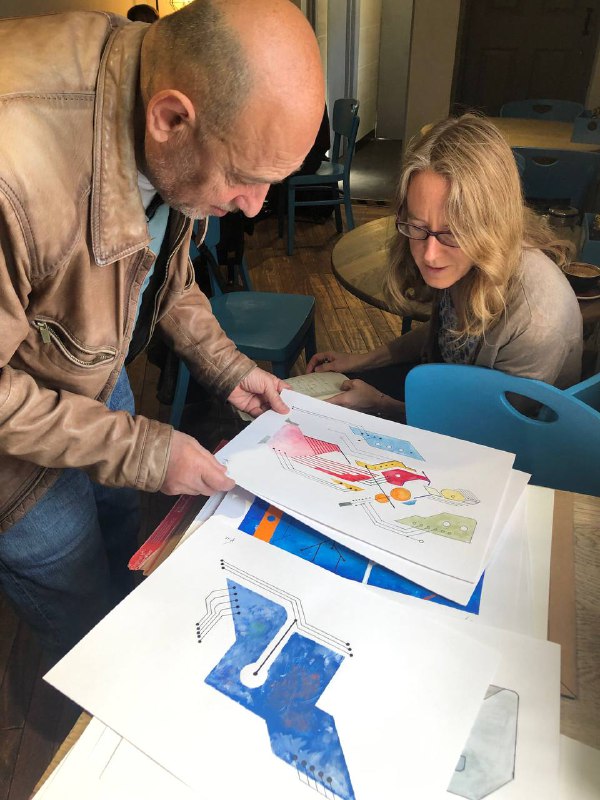
“Schematism” is my discipline. Discipline is a contrast between what you want and don’t want. The straight line is a discipline. On its own, it is a pure diagram, which nobody is interested in. But when you add the process of ‘non-discipline’ to that straight line, you have ‘free art’. You need rules but you also need to break them to create art.
I worked as a businessman for many years before becoming an artist. I was very successful in London: I have been a millionaire three times in my life. Three times in my life I made a lot of money and spent a lot of money. I thought it wasn’t a big deal. If I wanted to, I could sit down for a few hours and create an Idea. There are never-ending ways of making money. Everybody who worked with me could make money and become a millionaire. But things were becoming more expensive in London as prices went up. I wanted to stop this spiral of making and spending money. It was not conducive to being an artist. I wanted to dedicate my life to art, to making art. I had always thought about myself more as an artist than a businessman. I wanted my value to come from my art, not to create businesses, however successful they were. I could only see value in my life coming from being an artist. The main difference between value in business and art is the time-frame: in business everything is running on a short time-scale whereas art can increase in value as time passes. I believe ‘value’ is something that you and other people take care of.

‘Value’ and ‘meaning’ are different terms. People often say that art is meaningless (whereas business is actually never meaningless in that sense). As an artist, I am not trying to be meaningful. If you ask people why they like a flower, they might say “Due to the colour, the shape, the scent” etc. These associations don’t have any meaning per se; there is no inherent meaning or logic to explain why people like what they like. So you cannot ‘explain’ art. Take Van Gogh’s sunflower – it could be seen as a silly, stupid, simple painting. It did not cost millions to produce. But it has a story, and that story has accumulated a cost. But stories are not inherently meaningful.
When I quit my business I let all of my money almost disappear. It was a deliberate process to become almost homeless. When I reached that point, I decided that was when I could become an artist. I stayed with various friends in their studios and homes until my mind was clear. Many friends offered me their places to stay. It was a process of waiting and being ready for the next step. My ex called me out of the blue from Turkey and said “We have a couple of plots in Turkey we could sell”. I didn’t want to negotiate or do a deal, just sell them and take half the money. I had just enough money to buy a little car and drive to Italy where I found an agency selling inexpensive houses. I bought it and renovated. It is on the edge of a small village on a hill. When I look out I see the eagles flying down below into the valley. I feel I am on top of everything! I have always imagined being an artist in Italy – Italy gives artists a lot: culture, history, nature. I can’t think of another country that would give me so much.
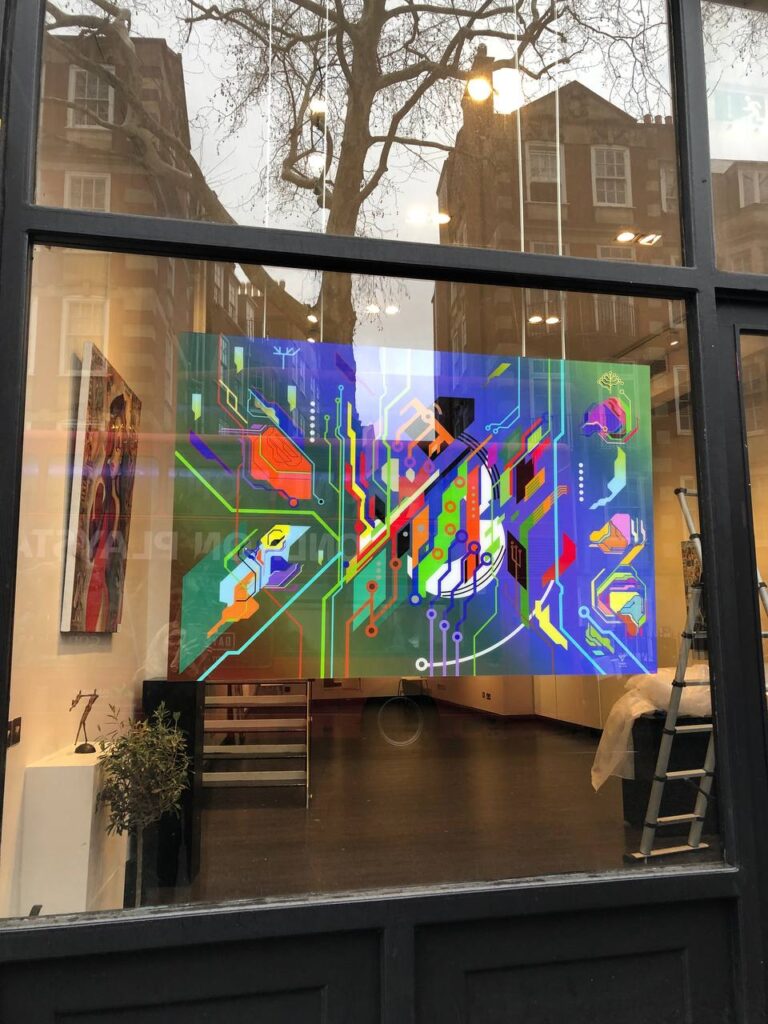
When you make money you don’t make art. Making money is also an art but in a different way. Business is hugely creative work. The feeling, that creative feeling, in fact, can be quite similar to being an artist. But the code of practice is quite different in these two fields. You sometimes have to do many mad and unusual things as a businessman, which can be very unpredictable and negative ultimately, but you have to do it because if you don’t, someone else will. The art market is also very competitive and is a big business so you need to be creative just to manage that aspect. But there is something else: in art you have to prove your uniqueness, which is extremely hard. It is very rare to find that. You can’t decide that but the complexity of your life and time will. As I can never be a businessman again, my life is now deciding for me with my focus on schematism…


